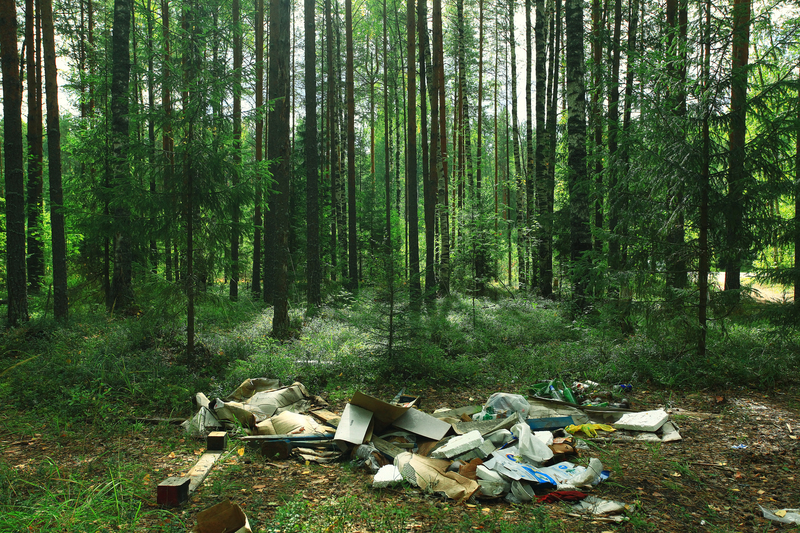Disposal Solutions for Daily PPE Items: Best Practices and Environmental Impact
Personal Protective Equipment (PPE) such as masks, gloves, face shields, and gowns have become everyday essentials for individuals and organizations worldwide. Their extensive use--spurred on by the COVID-19 pandemic--has significantly contributed to a surge in daily PPE waste generation. Knowing how to properly handle PPE waste disposal is essential for health, hygiene, and environmental sustainability.

Understanding Daily PPE Items and Their Waste Stream
PPE items are purpose-built to provide barriers against infectious agents and hazardous materials. However, most single-use PPE items are made from plastic polymers and synthetic fibers, which pose significant environmental challenges when improperly discarded. It's crucial to adopt effective disposal solutions to mitigate these risks.
Common Types of PPE in Daily Use
- Face Masks - Surgical, medical, and cloth masks are widely used in healthcare and public settings.
- Gloves - Latex, nitrile, and vinyl gloves are used for medical, food handling, and cleaning purposes.
- Face Shields & Goggles - Reusable or disposable, provide splash and droplet protection.
- Gowns and Aprons - Protect against splashes and contamination in healthcare and industrial settings.
- Shoe Covers & Caps - Frequently used in hospitals and laboratories.
*Each of these items, when discarded, enters the waste stream and has potential impacts on human health and the environment.*
Environmental Impact of Improper PPE Disposal
Improper disposal of daily PPE items leads to a range of negative outcomes:
- Landfill Overflow: Non-biodegradable PPE components accumulate rapidly, causing landfill constraints.
- Waterway Pollution: Disposed masks and gloves can enter rivers, lakes, and oceans, harming aquatic life.
- Microplastic Generation: PPE breaks down into tiny plastic particles that infiltrate ecosystems and food chains.
- Disease Transmission: Infected PPE can propagate pathogens if thrown away carelessly.
Eco-friendly PPE disposal solutions are therefore vital not only for personal safety but for planetary health, too.
Best Practices for Daily PPE Item Disposal
Adopting safe and responsible disposal methods ensures health protection and environmental stewardship. Below are comprehensive strategies for effective PPE waste management:
1. Segregation at Source
- Designated Bins: Place marked, foot-operated bins for PPE waste in homes, offices, and public places.
- Color Coding: Use color-coded liners (often red or yellow) to differentiate PPE wastes from recyclables and general trash.
Prompt and clear separation prevents cross-contamination and facilitates proper handling downstream.
2. Safe Handling and Transportation
- Staff or individuals should always wear gloves and masks when handling used PPE waste.
- Do not compact or crush PPE waste to avoid aerosolization of contaminants.
- Handle collection bins carefully and disinfect regularly.
3. Proper Disposal Methods for Different PPE Types
Face Masks
- Cut the ear loops before disposal to prevent harm to wildlife.
- Place used masks in a sealed bag before throwing into a trash bin.
- Do not toss masks in recycling bins as they contaminate recyclables.
Gloves
- Turn gloves inside out after use and place them in a lined waste bin.
- Do not flush gloves down toilets or drains--this causes blockages and environmental harm.
Other PPE (Gowns, Shields, Shoe Covers)
- If visibly contaminated with bodily fluids or hazardous substances, treat as biohazard waste (see healthcare protocols).
- If not contaminated, remove and bag securely before disposing of with general waste.
4. Special Medical or Biohazard Waste Disposal
Healthcare institutions and laboratories must follow regulated medical waste disposal procedures for PPE:
- Use officially approved incineration or autoclaving facilities.
- Employ leak-proof, puncture-resistant, and labeled containers for biohazards.
- Follow national or international waste management regulations.
5. Community and Public Area Solutions
- Install tamper-resistant, no-touch PPE disposal bins in parks, malls, and transit systems.
- Launch public awareness campaigns on PPE disposal best practices.
- Discourage littering through signage and civic penalties.
Innovative and Eco-Friendly PPE Waste Management Solutions
As daily PPE use becomes the norm, sustainable solutions for PPE item disposal must be prioritized. Here are some innovative approaches:
1. PPE Recycling Programs
- Some companies and municipalities now offer recycling boxes specifically for face masks and gloves.
- Advanced systems sterilize, shred, and convert PPE materials into plastic pellets for manufacturing new products (e.g., park benches, tiles).
*Check with local authorities or recycling facilitators for participation in these programs.*
2. Biodegradable PPE Alternatives
- Investment in biopolymer-based, compostable PPE reduces landfill burden.
- Support producers and retailers supplying certified biodegradable masks and gloves.
3. Energy Recovery
- PPE waste incinerated in controlled facilities can produce electricity or heat, reducing the net environmental impact.
- Ensure emissions control measures to prevent toxic byproduct release.
4. Product Redesign and Reusability
- Adopt reusable PPE, such as washable cloth masks and gowns, in appropriate settings.
- Sanitize between uses according to manufacturers' guidelines.
- This minimizes single-use PPE waste and its attendant disposal challenges.
Guidelines for Household, Workplace, and Healthcare PPE Disposal
Households
- Double-bag used PPE: Especially if anyone is sick at home or has symptoms.
- Secure bins: Use bins with tight-fitting lids to avoid accidental exposure or spillage.
- Regular collection: Dispose of household waste frequently to deter pests and reduce odors.
Workplaces
- Employee training: Teach staff the correct PPE waste protocols.
- PPE disposal policy: Display posters and instructions prominently in break rooms and entryways.
- Assigned monitors: Designate responsible individuals to oversee compliance and address breaches.
Healthcare Facilities
- Strict adherence: Follow all local, national, and WHO guidelines for infectious medical waste management.
- Label and track: Maintain records for all biohazard PPE disposal for regulatory review.
- Professional handling: Only licensed contractors should manage transport and final treatment of medical PPE waste.
Challenges to Effective PPE Waste Management
Despite available disposal solutions, several challenges persist when it comes to responsibly managing daily PPE waste:
- Poor segregation: Many users dispose of PPE with recyclables or organic waste.
- Lack of infrastructure: Not all communities have specialized facilities for PPE collection or treatment.
- Cost: PPE recycling and safe destruction can be more expensive than ordinary waste disposal.
- Public awareness: Unclear or absent communication leads to widespread littering and mismanagement.
How to Encourage Responsible PPE Disposal Habits
It is everyone's duty--individuals, businesses, and governments--to uphold responsible PPE item disposal solutions. Here are strategies to foster better habits:
- Education: Promote understanding through community workshops and digital campaigns.
- Accessibility: Increase the number of PPE waste bins in public places.
- Accountability: Implement fines or penalties for illegal dumping of PPE waste.
- Recognition: Reward and acknowledge best practices in workplaces and communities.
Legislation and Policy for PPE Waste Management
Government intervention is pivotal in shaping sustainable PPE disposal practices. Laws and regulations should:
- Mandate segregation and safe collection of PPE waste, especially in public settings.
- Subsidize development of biodegradable and recyclable PPE materials.
- Support startups and companies innovating in PPE recycling.
- Maintain strict oversight on incineration, autoclaving, and landfill operations.

The Future of PPE Waste Disposal: Toward Sustainability
As routine PPE use remains a feature of modern life, sustainable disposal solutions for daily PPE items must evolve. Continued research into new materials, innovative recycling processes, and behavioral change is crucial. Emphasis on the following pillars will form the foundation of sustainable PPE waste management for years to come:
- Reduction: Limit unnecessary single-use PPE when alternate measures are sufficient.
- Redesign: Encourage development and adoption of reusable and recyclable PPE.
- Responsibility: Foster a culture of stewardship among individuals and organizations.
Conclusion: Taking Action on PPE Waste
Proper disposal solutions for daily PPE items is a collective responsibility that ensures the well-being of individuals and the planet. Whether you are managing household waste, leading a business, or shaping public policy, adopting effective PPE disposal practices safeguards communities and the environment. By prioritizing segregation, supporting innovations in recycling, switching to biodegradable alternatives, and spreading awareness, we can all play a role in creating a cleaner, safer future.
Every mask, glove, or face shield that is disposed of responsibly is a step toward public health and environmental sustainability--let's make a difference together.
- Segregate and contain PPE waste immediately after use.
- Support community and workplace policies for safe disposal.
- Champion innovations in recycling and biodegradable PPE products.
For more tips and news on sustainable waste solutions, stay connected with reputable resources and governing bodies. Your actions matter in the global effort to manage and reduce PPE waste.
